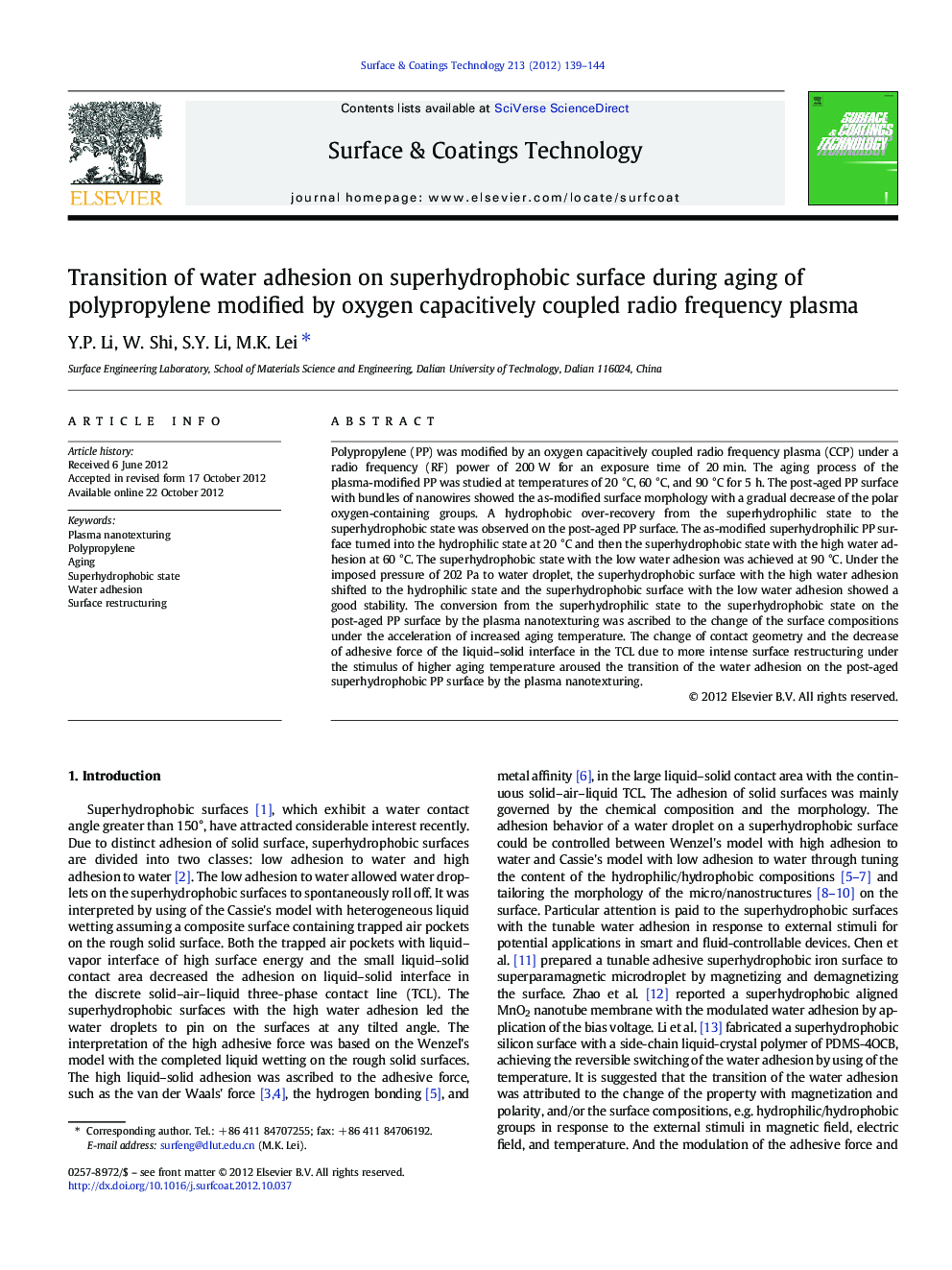| Article ID | Journal | Published Year | Pages | File Type |
|---|---|---|---|---|
| 1658249 | Surface and Coatings Technology | 2012 | 6 Pages |
Polypropylene (PP) was modified by an oxygen capacitively coupled radio frequency plasma (CCP) under a radio frequency (RF) power of 200 W for an exposure time of 20 min. The aging process of the plasma-modified PP was studied at temperatures of 20 °C, 60 °C, and 90 °C for 5 h. The post-aged PP surface with bundles of nanowires showed the as-modified surface morphology with a gradual decrease of the polar oxygen-containing groups. A hydrophobic over-recovery from the superhydrophilic state to the superhydrophobic state was observed on the post-aged PP surface. The as-modified superhydrophilic PP surface turned into the hydrophilic state at 20 °C and then the superhydrophobic state with the high water adhesion at 60 °C. The superhydrophobic state with the low water adhesion was achieved at 90 °C. Under the imposed pressure of 202 Pa to water droplet, the superhydrophobic surface with the high water adhesion shifted to the hydrophilic state and the superhydrophobic surface with the low water adhesion showed a good stability. The conversion from the superhydrophilic state to the superhydrophobic state on the post-aged PP surface by the plasma nanotexturing was ascribed to the change of the surface compositions under the acceleration of increased aging temperature. The change of contact geometry and the decrease of adhesive force of the liquid–solid interface in the TCL due to more intense surface restructuring under the stimulus of higher aging temperature aroused the transition of the water adhesion on the post-aged superhydrophobic PP surface by the plasma nanotexturing.
► Transition of water adhesion on superhydrophobicity by plasma nanotexturing achieved. ► PP surface showed stable morphology with nanowires in bundles during aging process. ► Surface restructuring by stimuli of temperature induced transition of water adhesion. ► Superhydrophobicity with high adhesion shifted to hydrophilicity under pressure. ► Superhydrophobicity with low adhesion showed stability under pressure of 202 Pa.
